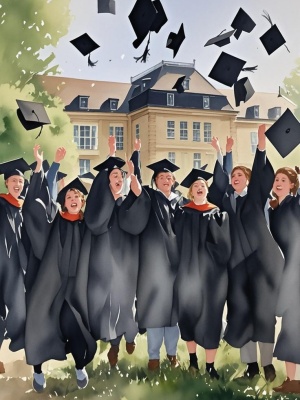The Timeless Beauty of Antique Japanese Watercolor Painting
Introduction: A Glimpse into Japan's Artistic Heritage
Antique Japanese watercolor painting represents one of the most refined artistic traditions in world history. Developed over centuries, these delicate works showcase Japan's unique aesthetic sensibility, blending natural themes with spiritual depth. From the elegant brushstrokes of sumi-e ink wash paintings to the vibrant colors of ukiyo-e woodblock prints, Japanese watercolor techniques have influenced artists globally.
For collectors and art enthusiasts, understanding antique Japanese watercolor paintings involves appreciating their historical context, materials, and distinctive styles. This article explores key aspects of these masterpieces, offering insights into their creation and preservation. If you're interested in similar artistic transformations, you might enjoy our portrait to art conversion techniques.
The Evolution of Japanese Watercolor Techniques
Early Influences and Development
The roots of Japanese watercolor painting trace back to China's Tang Dynasty (618-907 AD), when Buddhist monks introduced ink painting techniques. Over time, Japanese artists developed distinct approaches:
- Yamato-e: Courtly paintings featuring mineral pigments
- Sumi-e: Monochromatic ink wash paintings emphasizing spontaneity
- Nihonga: Traditional style using natural pigments and washi paper
Materials and Methods
Authentic antique Japanese watercolors employed specific materials that contributed to their longevity:
- Handmade washi paper from mulberry fibers
- Mineral pigments like gunjo (ultramarine) and shu (vermilion)
- Animal glue binders for pigment adhesion
Preservation Challenges and Solutions
Maintaining antique Japanese watercolors presents unique difficulties due to their delicate nature. Here's a problem-solution matrix for collectors:
| Problem | Solution |
|---|---|
| Pigment fading | UV-filtered display cases |
| Paper deterioration | Controlled humidity (45-55%) |
| Insect damage | Regular inspection and cedar storage |
Modern technology offers new preservation methods. Our AI photo restoration techniques can help digitally preserve fragile artworks.
Recognizing Authentic Pieces

Identifying genuine antique Japanese watercolors requires attention to several details:
- Paper aging patterns (natural vs. artificial)
- Brushstroke techniques specific to historical periods
- Artist seals and calligraphy styles
- Pigment composition matching period materials
For those interested in creating their own watercolor effects, explore our AI painting guide for modern interpretations.

Conclusion: The Enduring Legacy
Antique Japanese watercolor paintings remain invaluable cultural treasures that continue to inspire contemporary artists worldwide. Their delicate balance of technical precision and expressive freedom represents an artistic philosophy that values harmony with nature. As we develop new methods to preserve and study these works, we ensure future generations can appreciate their beauty.
For further reading on Japanese art techniques, visit the Metropolitan Museum of Art's timeline or explore our digital gallery of transformed artworks.